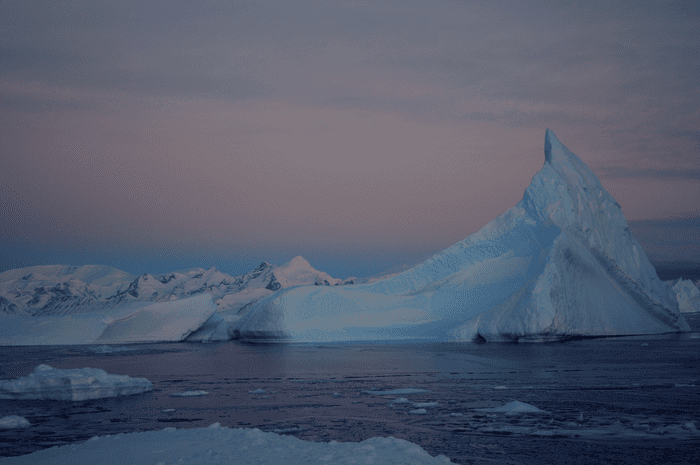Researchers have found that the Antarctic region known as the Amundsen Sea Embayment has lost more than 3,000 billion tons of ice in 25 years. This makes it the fastest-changing region in Antarctica and it is currently the biggest contributor to sea level rise from the Antarctic Ice Sheet.
The Amundsen Sea Embayment is located in West Antarctica and was discovered in February 1929 by Nils Larsen, a Norwegian whaler and sea captain, who named the area after Roald Amundsen, a famous Norwegian polar explorer. It is made up of 20 major glaciers that are four times the size of the UK. There is so much water held within this ice that, if it were to completely melt into the sea, it would raise global sea levels by more than a meter (3 feet).

If all the ice of the Amundsen Sea Embayment were to melt, it would lead to the world’s oceans rising by over a meter (3 feet). Image Credit: The University of Leeds.
A team of scientists led by Dr Benjamin Davison from the University of Leeds, UK, have estimated the “mass balance” of the Amundsen Sea Embayment, which is the balance between the amount of snow and ice gained from snowfall and the amount lost through calving, the process where icebergs break off glaciers and float out to sea. The region can lose its overall ice mass if calving occurs faster than snowfall can replace it or if snowfall drops to significantly low levels.
The team’s results show that the Embayment saw a net loss of 3,331 billion tons of ice between 1996 and 2021, which resulted in over 9 millimeters (0.4 inches) of sea level rise across the globe.
To give a sense of scale, it is estimated that, if this lost ice was stacked on London, it would stand over 2 kilometers (1.2 miles) high, which is about 7.4 times the height of the Shard. If it were to cover Manhattan, it would stand at 61 kilometers (38 miles) – or 137 Empire State Buildings placed on top of one another.
According to a statement made by Dr Davison, a Research Fellow at the Institute for Climate and Atmospheric Science at Leeds, “the 20 glaciers in West Antarctica have lost an awful lot of ice over the last quarter of a century and there is no sign that the process is going to reverse anytime soon although there were periods where the rate of mass loss did ease slightly.”
“Scientists are monitoring what is happening in the Amundsen Sea Embayment because of the crucial role it plays in sea-level rise. If ocean levels were to rise significantly in future years, there are communities around the world who would experience extreme flooding.”
Calculating extreme snowfall events
Davison’s team were able to identify that the Amundsen Sea Embayment has suffered several extreme snowfall events over the last 25 years. They used climate models to see how air currents move around the world. This revealed that the region experienced both periods of heavy snowfall and “snow droughts” – periods of little snowfall.
Their models showed that, between 2009 and 2013, a long period of low snowfall had shrunk the ice sheet, contributing around 25 percent more to sea level rise than average. Conversely, the winters of 2019 and 2020 saw heavy snowfall, which lowered its contribution to sea level rise by about half of what it would have been in an average year.
“We were really surprised to see just how much periods of extremely low or high snowfall could affect the ice sheet over two to five-year periods – so much so that we think they could play an important, albeit secondary role, in controlling rates of West Antarctic ice loss,” Dr Davison added.
Dr Pierre Dutrieux, a scientist at the British Antarctic Survey and co-author of the study, stated: “Ocean temperature changes and glacial dynamics appear strongly connected in this part of the world, but this work highlights the large variability and unexpected processes by which snowfall also plays a direct role in modulating glacier mass.”
A new glacier is revealed
The total ice loss from Amundsen Sea Embayment over the period of study has also seen a reduction in the Pine Island Glacier, or PIG for short. Its retreat caused a tributary glacier – a smaller glacier that flows into a larger one – to break away. The tributary glacier has now been named Piglet Glacier by the UK Antarctic Place-names Committee, so that it can be easily located for future research.
Dr Anna Hogg, another co-author of the paper and Associate Professor at the Institute of Climate and Atmospheric Science at Leeds, added: “As well as shedding new light on the role of extreme snowfall variability on ice sheet mass changes, this research also provides new estimates of how quickly this important region of Antarctica is contributing to sea level rise.”
“Satellite observations have showed that the newly named Piglet Glacier accelerated its ice speed by 40 percent, as the larger PIG retreated to its smallest extent since records began.”
The study is published in Nature Communications.
Source Link: Over 3,000 Billion Tons Of Antarctic Ice Has Been Lost In Just Over 25 Years